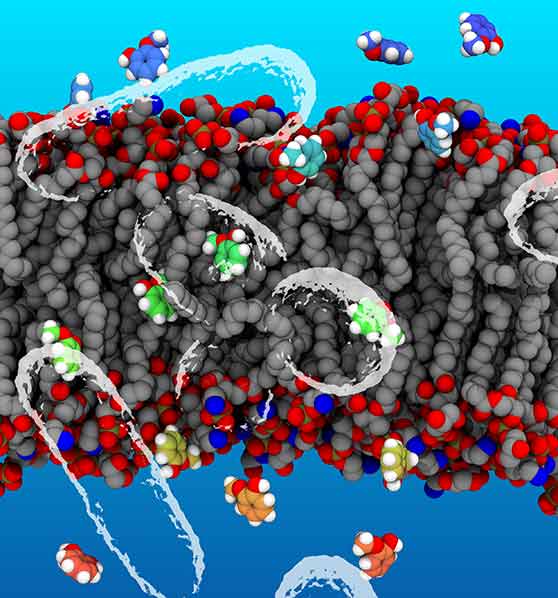Talented alum from ASU's School of Molecular Sciences returns for lecture

Josh Vermaas, assistant professor at Michigan State University and alumnus of ASU’s School of Molecular Sciences and the Department of Physics. Photo by Mary Zhu/ASU
On a recent cool Friday afternoon, ASU alumnus Josh Vermaas came full circle, delivering the School of Molecular Sciences’ weekly seminar in the Biodesign auditorium. Vermaas graduated with degrees in biochemistry, physics and computational math from Arizona State University in 2010.
“I really value the experiences I had at ASU, interacting with the faculty to explore different directions that my career could take,” Vermaas said.
After completing a PhD in biophysics from the University of Illinois at Urbana-Champaign and a postdoc at the National Renewable Energy Laboratory in Golden, Colorado, Vermaas is currently an assistant professor at Michigan State University.
Deciding to become an academic is daunting for anyone, but as the son of an academic, Vermaas already had full knowledge of the trials and tribulations involved. Undaunted, he took the plunge, as an assistant professor in the MSU-DOE Plant Research Laboratory and the Department of Biochemistry and Molecular Biology at Michigan State University as of January 2021.
Vermaas said his advice to undergraduates and graduates students is that networking really helped him move through the stages of his career: from undergraduate student to PhD to postdoc, and then Michigan State University. Knowing certain people made things much easier, he said.
"Josh is a very enthusiastic young colleague whose work on catalysis of materials, not just molecules, earns him a special place at the intersection of the biophysics and energy sciences community," said Abhishek Singharoy, assistant professor in the School of Molecular Sciences.
While taking Physics 151 at ASU, Vermaas learned the programming language Python and leveraged this in his honors project with President’s Professor Ian Gould, an associate director of the School of Molecular Sciences. He developed an infrared simulator, which showed how different chemical bonds vibrate at distinct frequencies.
Vermaas was engaged in various research as an ASU undergraduate with professors Bruce Doak (now in Germany) and Kevin Schmidt, in the Department of Physics. He was also involved with nano-thermodynamics simulations with professors Ralph Chamberlin (physics) and George Wolf (School of Molecular Sciences).
Vermaas said that the mix of research experiences taught him he was prone to breaking things in the lab, so he took it as a sign that he was meant to do computer simulations instead.

Lipid bilayers are semipermeable to small molecules, such as the guaiacol molecules shown here. To emphasize the biological context, electron micrograph images of the bacteria have been overlaid onto the model rendering. Image credit: Josh Vermaas.
As a computational biophysicist, Vermaas applies emerging techniques in molecular simulation to study photosynthesis, plant metabolism and biomaterials.
The Vermaas lab uses atomic simulation tools to create accurate molecular-scale models for biological phenomena at the nanoscale. In this form of computational microscopy, Newton’s equations of motion track atomic positions for a system over time. The dynamic simulations provide a unique perspective to better understand the connection between form and function for nanostructures found throughout biology. The insights from these simulations can then be applied to engineering plants or microbes to facilitate efficient energy conversion and bioproduct production to meet today’s sustainability challenges.
More Science and technology

ASU and Deca Technologies selected to lead $100M SHIELD USA project to strengthen U.S. semiconductor packaging capabilities
The National Institute of Standards and Technology — part of the U.S. Department of Commerce — announced today that it plans to…

From food crops to cancer clinics: Lessons in extermination resistance
Just as crop-devouring insects evolve to resist pesticides, cancer cells can increase their lethality by developing resistance to…

ASU professor wins NIH Director’s New Innovator Award for research linking gene function to brain structure
Life experiences alter us in many ways, including how we act and our mental and physical health. What we go through can even…